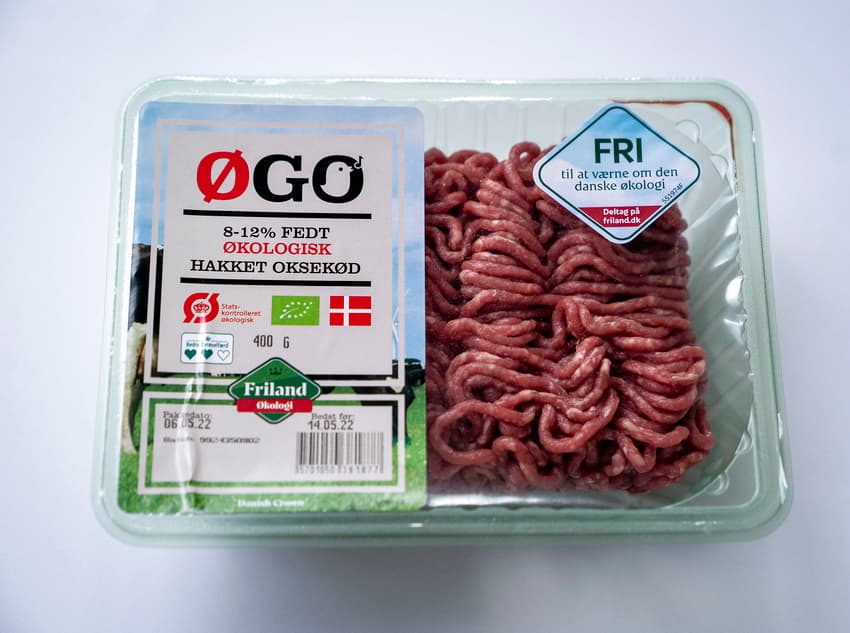Denmark’s inflation now over 11 percent

The increase in prices of consumer goods over the last year in Denmark is now at a record 11.1 percent, according to EU-wide data processed by national agency Statistics Denmark.
Consumer prices in the 27 EU countries in September were 10.9 percent higher than one year previously, according to new inflation figures from an EU-harmonised price index published by Statistics Denmark on Monday.
“High inflation is raging everywhere in Europe. 18 countries in Europe are battling two-digit inflation rates. It’s worst in the Baltic region where inflation is over 20 percent in all three countries,” senior economist Allen Sørensen of the Confederation of Danish Industry (DI) said in a written comment.
In Denmark, inflation is calculated to be slightly higher than the EU average, with a 12-month increase of 11.1 percent in September.
The Danish figure is notably higher than an earlier analysis from Statistics Denmark, which placed it at 10 percent for September.
EU inflation data is based on a different method to that used by the Danish statistics agency when focusing on Denmark alone, and generally returns a higher figure.
Nevertheless, economists have expressed concern.
The inflation rate is a “true nightmare for Danish wallets”, according to Niclas Praefke, senior economist with managers’ trade union Lederne.
“The high inflation sucks purchasing power from household finances and bites a large chunk out of private Danish economies. It is certainly the greatest challenge for the Danish economy,” he said in a written comment.
The most recent figures showed that the private labour marker grew by 3.5 pecent. That means that Danes are seeing a large reduction of wages in real terms. We are simply able to buy significantly fewer things with our wages,” he said
Core inflation is stable at 6.7 percent, Statistics Denmark also notes. This denotes inflation without the change in cost of energy and food factored in.
Some economists see this metric as a measure of how far overall inflation as spread. It covers the change in the prices of goods such as cars, computers and household appliances as well as house prices.
READ ALSO: EXPLAINED: When should I turn on my heating in Denmark this year?
Comments
See Also
Consumer prices in the 27 EU countries in September were 10.9 percent higher than one year previously, according to new inflation figures from an EU-harmonised price index published by Statistics Denmark on Monday.
“High inflation is raging everywhere in Europe. 18 countries in Europe are battling two-digit inflation rates. It’s worst in the Baltic region where inflation is over 20 percent in all three countries,” senior economist Allen Sørensen of the Confederation of Danish Industry (DI) said in a written comment.
In Denmark, inflation is calculated to be slightly higher than the EU average, with a 12-month increase of 11.1 percent in September.
The Danish figure is notably higher than an earlier analysis from Statistics Denmark, which placed it at 10 percent for September.
EU inflation data is based on a different method to that used by the Danish statistics agency when focusing on Denmark alone, and generally returns a higher figure.
Nevertheless, economists have expressed concern.
The inflation rate is a “true nightmare for Danish wallets”, according to Niclas Praefke, senior economist with managers’ trade union Lederne.
“The high inflation sucks purchasing power from household finances and bites a large chunk out of private Danish economies. It is certainly the greatest challenge for the Danish economy,” he said in a written comment.
The most recent figures showed that the private labour marker grew by 3.5 pecent. That means that Danes are seeing a large reduction of wages in real terms. We are simply able to buy significantly fewer things with our wages,” he said
Core inflation is stable at 6.7 percent, Statistics Denmark also notes. This denotes inflation without the change in cost of energy and food factored in.
Some economists see this metric as a measure of how far overall inflation as spread. It covers the change in the prices of goods such as cars, computers and household appliances as well as house prices.
READ ALSO: EXPLAINED: When should I turn on my heating in Denmark this year?
Join the conversation in our comments section below. Share your own views and experience and if you have a question or suggestion for our journalists then email us at [email protected].
Please keep comments civil, constructive and on topic – and make sure to read our terms of use before getting involved.
Please log in here to leave a comment.